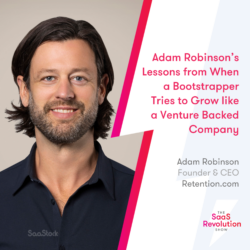AI is no longer just a buzzword for startups trying to sound futuristic. It’s a quiet engine running under the hood of businesses that want to work smarter, not just faster.
But here’s the part most people get wrong: you don’t need to “do AI.” You need to rethink how your work gets done — and then let AI take over the parts that waste your time, slow down your team, or bury insights under repetitive tasks.
That’s where AI workflows come in.
Whether you’re running an eCommerce brand, a SaaS product, a membership community, or a content-heavy platform — AI workflows let you automate processes with judgment, not just repetition. This isn’t about setting up a few auto-replies or chatbots. It’s about building systems that think a little, adapt a little, and free up space for what actually moves your business forward.
Let’s dig into what AI workflows really mean, how online businesses can use them, and why the smartest teams aren’t asking if they should use AI — but where it fits.
What’s an AI workflow, exactly?
In plain English: it’s a set of tasks that are partially or fully executed using artificial intelligence — often with minimal human intervention once it’s running.
A basic automation workflow might say:
“When someone fills out this form, send them an email.”
An AI-powered workflow says:
“When someone fills out this form, summarize their message, sort it into a category, and personalize the response based on tone and urgency.”
AI adds context. It helps the system interpret meaning, prioritize what matters, and generate responses or decisions that feel less robotic.
You’re not replacing your workflows. You’re training them to be smarter.
Why online businesses should care
Most online businesses run on content, communication, and customer data — all of which are ideal for AI. These are high-volume, high-context tasks where AI isn’t just faster — it can actually improve the output if designed well.
But here’s the real reason to use AI workflows: scale breaks things. When your business grows, doing more of the same manual work becomes impossible. And hiring endlessly to patch the gaps gets expensive fast.
AI workflows help you grow without bottlenecking your team. You get:
- Faster response times (without hiring more agents)
- Personalized experiences (without writing every email manually)
- Cleaner operations (without spreadsheets duct-taped together)
- Real-time insights (without spending hours digging through dashboards)
It’s not about cutting headcount. It’s about unblocking the people you already have.
Core ways AI workflows show up in online businesses
Let’s break down the main areas where AI workflows are already reshaping how modern online businesses operate — often invisibly.
- Customer support that doesn’t burn out your team
Agentic AI doesn’t just power chatbots anymore — it supports human agents in smarter ways. You can set up workflows that:
- Automatically tag and route support tickets based on urgency and intent
- Suggest replies or FAQs based on conversation context
- Summarize past customer interactions so agents aren’t playing catch-up
- Escalate issues with the right framing (e.g., “This customer has contacted us 3x this week about billing”)
This doesn’t mean your support becomes robotic. It means your team starts every conversation 3 steps ahead — and spends less time on repetitive back-and-forth.
Result? Happier customers. Less burnout.
- Smarter lead qualification (and less wasted sales time)
Not every lead is worth chasing. And the longer you take to respond, the colder they get. AI workflows help sales teams cut through noise by:
- Scanning form submissions or chat inquiries and scoring leads automatically
- Grouping them by intent, budget, or industry based on keywords and phrasing
- Auto-assigning to the right rep (or queue) based on complexity
- Triggering tailored outreach messages based on what they’re looking for
You stop guessing who’s worth following up with — and spend more time actually closing.
For small teams especially, this means fewer dropped leads and faster deal cycles without manually filtering through forms and inboxes.
- Hyper-personalized marketing at scale
Let’s be honest — most marketing automation is just glorified mail merge. It’s triggered, yes. But not personalized.
AI changes that by making it easy to generate contextual messaging based on real customer behavior. Imagine workflows that:
- Rewrite abandoned cart emails based on the product category and browsing habits
- Personalize onboarding sequences based on user goals (pulled from survey responses or chat)
- Update subject lines in real time based on user interests or prior open rates
- Generate dynamic recommendations for blogs, tools, or next steps in the funnel
- Launch and manage referral programs with platforms like ReferralCandy, automating personalized reward offers and follow-ups that turn happy customers into brand advocates.
These are small changes that compound. Instead of “Hey [Name], check this out,” you’re sending messages that actually feel like they were written for that person.
And the best part? AI can do this continuously — no weekly segmentation sprint needed.
- Content production that doesn’t kill your calendar
Running a content-driven business — whether it’s a blog, YouTube channel, online course, or community — means you’re always behind. Always planning. Always writing.
AI can’t replace your strategy. But it can move your production line forward. Workflows can be set up to:
- Auto-summarize customer calls into blog ideas or FAQs
- Generate draft outlines based on trending topics in your niche
- Turn long-form content into bite-sized social posts
- Repurpose video/audio into captions, posts, or transcripts
You’re not automating creativity. You’re removing the friction between ideas and execution.
One hour of podcast → 10 micro-posts → 3 email ideas → 1 blog draft. That’s an AI-powered content loop.
- Better internal decision-making — on autopilot
AI workflows aren’t just outward-facing. They also make your internal team sharper by surfacing insights faster.
Examples include:
- Automatically flagging sudden dips in sales or signups and alerting relevant teams
- Summarizing monthly performance metrics in plain English (so you don’t need a dashboard deep-dive)
- Notifying ops teams when customer churn is spiking beyond average
- Triggering a task or internal review when anomalies are detected in usage, revenue, or feedback
Instead of waiting for someone to notice a problem, your systems tell you. This kind of real-time monitoring helps you stay in tune with your team’s workplace pulse, spotting dips in morale, engagement, or focus before they escalate.
This is how modern ops teams stay lean while scaling aggressively.
Key differences between AI workflows and traditional automation
Let’s clarify something. Automation isn’t new. Zapier, Make (formerly Integromat), CRMs — they’ve all let you stitch together processes for years.
So why is AI-powered workflow automation different?
Here’s the shift:
| Traditional automation | AI workflow |
| Follows exact rules (if this, then that) | Interprets intent, tone, meaning |
| Needs specific inputs | Can work with natural language, messy data |
| Breaks when conditions change | Adapts to new inputs (within reason) |
| Requires strict templates | Generates its own responses and summaries |
| Great for structured tasks | Great for unstructured, fuzzy tasks |
In other words, AI is the layer that interprets. You still need structure. But now you can build systems that understand enough to make judgment calls — or at least get you 80% there.
The next leap: AI agents
If AI workflows interpret and automate individual steps, AI agents go further – they run the entire workflow end-to-end. Instead of just tagging leads or drafting replies, an AI agent can research prospects, launch multi-step campaigns, adjust messaging based on responses, and even schedule follow-ups — all autonomously. For SaaS teams, this means moving from “smarter tasks” to fully managed processes that scale themselves in real time.
What AI workflows can’t (and shouldn’t) do
It’s not all sunshine and efficiency. AI workflows have limits — and it’s smart to know them upfront.
They’re not great at:
- Nuanced emotional conversations (especially in sensitive industries)
- Tasks that require deep product context or ethical judgment
- “One-and-done” manual processes that change constantly
- Complying with every privacy rule without oversight
Don’t blindly hand off responsibility. Instead, use AI to support human decisions, not replace them.
Build workflows where AI handles the first pass, flags potential issues, or creates draft versions — and then your team brings the final polish.
Where to start (without needing a full AI team)
You don’t need a PhD, dev team, or enterprise budget to use AI workflows.
Here’s a realistic way to start integrating them into your online business:
Audit your bottlenecks.
Where is your team repeating the same task 10x a day? Which parts of your funnel get the most questions? What causes response delays?
This same diagnostic approach is used in AI Recruiting, where hiring teams map out repetitive screening steps and then embed smart automations to identify top candidates faster.
- Map the workflow manually.
Document the steps. Who does what? What data is needed? What’s the trigger? The decision point? - Identify the “fuzzy” parts.
Look for steps that require summarizing, rewriting, analyzing tone, or interpreting vague info. These are prime AI targets. - Start with a low-risk, high-impact test.
For example: summarizing support tickets, rewriting email replies, or categorizing incoming leads based on form data. - Layer AI into one step.
Don’t rebuild your funnel. Just swap out one step — like replacing a dropdown field with an AI-powered classification that interprets free-text responses. - Monitor, refine, and expand.
Once one workflow works, scale it. Move to other departments. Let teams pitch ideas. Keep the momentum without overbuilding.
Even small SaaS teams often start by bringing in part‑time AI workflow or automation specialists to set up their first smart processes. Freelance platforms make it easy to tap into freelance AI engineers without committing to a full-time hire.
The symbiotic relationship: humans training AI, AI empowering humans
The most effective AI workflows aren’t about replacing human roles entirely, but rather creating a symbiotic relationship where humans train AI, and AI, in turn, empowers humans to perform at a higher level. This goes beyond just “monitoring and refining”; it’s a continuous feedback loop that fosters mutual improvement.
Consider this dynamic:
- Human-in-the-loop validation: Initially, human teams might review AI-generated summaries, categorized leads, or drafted responses, providing explicit feedback (“good,” “needs correction,” “wrong category”). This direct feedback acts as crucial training data, allowing the AI model to learn and improve its accuracy and nuance over time.
- AI as an advanced assistant: As the agentic AI learns, it moves from merely automating basic tasks to acting as a sophisticated assistant. For instance, a support AI might not just summarize tickets but also cross-reference solutions from a knowledge base, highlight key customer sentiment, and even draft complex, multi-paragraph responses for an agent’s final review.
- Humans focusing on high-value tasks: With the AI handling the heavy lifting of data interpretation and initial output generation, human employees are freed up to focus on truly strategic, empathetic, or creative tasks that AI simply can’t replicate. This means sales reps build deeper relationships, support agents handle emotionally charged cases with greater care, and marketers focus on breakthrough campaigns rather than routine content repurposing.
This continuous cycle of human oversight and AI refinement not only drives efficiency but also elevates the quality and impact of human work, fostering a more engaging and less repetitive work environment.
Avoiding “algorithm aversion”: getting team buy-in
A significant hurdle to implementing AI workflows isn’t technical, but psychological: algorithm aversion. Employees often resist AI adoption due to fear of job displacement, lack of understanding, or a general distrust of automated decision-making. Overcoming this requires a proactive strategy to foster team buy-in, ensuring AI is seen as an enabler, not a threat.
Key strategies to mitigate algorithm aversion include:
- Transparent communication: Clearly articulate why AI is being implemented (e.g., to reduce burnout, improve customer experience, unblock creative time), rather than focusing solely on cost savings or efficiency. Emphasize that AI handles repetitive tasks, allowing humans to focus on higher-level, more satisfying work.
- Early involvement and co-creation: Involve the teams whose workflows will be affected from the very beginning. Let them identify pain points where AI could help, pilot new AI tools, and provide direct input on how workflows are designed. This co-creation fosters a sense of ownership and reduces resistance.
- Training and upskilling: Provide comprehensive training, not just on how to use the new AI tools, but also on how AI works at a fundamental level. Offer opportunities for employees to upskill in areas that complement AI, such as data interpretation, strategic thinking, or complex problem-solving. This frames AI as an opportunity for professional growth.
- Showcasing tangible benefits for individuals: Highlight personal wins. Share anecdotes of how AI saved a support agent hours of manual tagging, or how a sales rep closed more deals because AI qualified leads better. Personal stories resonate more than abstract efficiency metrics.
Businesses can turn potential resistance into enthusiastic adoption, ensuring AI workflows truly augment, rather than alienate, their workforce.
The data flywheel: AI workflows creating compounding insights
One of the most powerful, yet often overlooked, benefits of AI workflows is their ability to create a data flywheel. Unlike traditional automation that simply processes data, AI-powered workflows generate new, enriched data points and insights as they operate. This continuously feeds back into the system, making the AI smarter, the workflows more efficient, and the business more intelligent over time.
Here’s how this data flywheel effect works:
- Workflow execution generates data: Every time an AI workflow categorizes an email, summarizes a conversation, or scores a lead, it’s creating new, structured data (e.g., “customer intent: cancellation,” “lead score: high,” “sentiment: frustrated”).
- Enriched data improves AI models: This newly generated, labeled data becomes training material for your AI models. For example, if human agents consistently correct an AI’s lead scoring, the AI learns from these corrections, leading to more accurate scoring in the future.
- Better AI models enhance workflow output: As the AI models improve, the workflows become even more precise, intelligent, and autonomous. This leads to higher quality summaries, more accurate categorizations, and more effective personalized messages.
- Enhanced workflows provide deeper insights: The improved workflow outputs (e.g., more accurate trends in customer sentiment, precise identification of product pain points) lead to richer, more actionable business insights that drive strategic decisions.
- Deeper insights fuel new workflow creation: These new insights often reveal opportunities for further automation and optimization, prompting the creation of even more sophisticated AI workflows, thus completing and accelerating the flywheel.
This compounding effect means that the value of AI workflows grows exponentially over time, transforming a business from passively collecting data to actively creating and leveraging intelligence tools and insights for continuous improvement.
Why AI workflows aren’t just a tech upgrade — they’re a mindset shift
At its core, using AI workflows is about letting go of control in the right places.
It’s saying: “I don’t need to approve every email manually.”
Or: “I trust the system to escalate real issues and mute the noise.”
It’s trusting your business to run on principles, not micromanagement. AI workflows are like giving your business a nervous system — one that reacts, prioritizes, and adapts before you even open your laptop.
Scale like you have a team of 50 (even if you don’t)
If you run an online business, your biggest threat isn’t competition — it’s capacity. How much you can do without burning out. How fast you can respond without hiring 10 more people. How well you can grow without dropping the ball.
AI workflows won’t solve every problem. But they can unlock leverage in a way that no manual system ever could.
You don’t need to be an AI company.
You just need to stop wasting your smartest people on dumb tasks.
Start small. Build smart. And let AI handle the things you shouldn’t have to.




